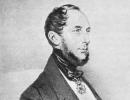Working hours of a teacher during the holiday period. What do teachers do at school in August? Is it possible to hire a teacher to school in the summer?
How should a teacher work during the holidays? On the eve of the summer holidays, many teachers are concerned about the working hours at school during this period. Students and parents often think that the holidays are the teacher’s time to rest. In practice, things are different. Teachers know that the holidays are theirs work time, and often no less stressful time than school time.
During the holidays, teachers are busy preparing necessary documentation, some teachers organize excursions, prepare for pedagogical councils and methodological associations, are involved in organizing and conducting state final certification in grades 9 and 11, etc.
What regulations regulate the working hours of a teacher?
- Labor Code of the Russian Federation No. 197-FZ of December 30, 2001 (hereinafter referred to as the Labor Code).
- Federal Law “On Education in the Russian Federation” No. 273-FZ dated December 29, 2012
- Order of the Ministry of Education and Science of the Russian Federation “On the peculiarities of working hours and rest time for teaching and other employees of educational institutions” No. 69 dated March 27, 2006 (hereinafter referred to as the Order).
- Order of the Ministry of Education and Science of the Russian Federation “On the duration of working hours of teaching staff and on the procedure for determining the teaching load of teaching staff specified in the employment contract” dated December 22, 2014 No. 1601 (hereinafter referred to as the Order “On the duration of working time”).
Labor Code:
- determines the circle of persons who cannot be admitted to teaching activities;
- establishes reduced working hours for teachers (no more than 36 hours per week);
- establishes the right to extended annual leave for a period of 42-56 calendar days, due to the increased intensity and intensity of a teacher’s work;
- provides the right to leave for a period of 1 year after continuous 10 years pedagogical work.
The special status of a teacher is also enshrined in the Law “On Education in the Russian Federation”. According to clause 7 of Article 47 of the Law “On Education in the Russian Federation”, the working hours and rest hours of a teacher are determined by a collective agreement, internal labor regulations and local acts educational organization(employment contract, work schedules, class schedules, etc.).
Thus, the Labor Code and the Law “On Education in the Russian Federation” determine the general provisions and features of the work of teaching staff.
Different categories of teaching staff have their own working hours (Order “On Working Hours”). For example, senior teachers preschool institutions, educational psychologists, social educators, teacher-organizers, senior counselors, etc., a duration of 36 hours of working time per week is established (clause 2.1 of the Order “On the duration of working time”). A speech pathologist teacher or speech therapist works 20 hours a week at a salary rate (clause 2.3 of the Order “On the duration of working hours”).
Is there a document that regulates a teacher’s work schedule during the holidays?
The order of the Ministry of Education and Science of the Russian Federation “On the peculiarities of the working hours and rest periods of teaching and other employees” describes in detail what kind of work schedule a teacher should have during the holidays. educational institutions» No. 69 dated March 27, 2006 (hereinafter referred to as the Order). Chapter IV defines the periods of autumn, winter, spring and summer holidays as teacher working hours.
Can teachers work shorter hours during the holidays?
During the holiday period, teachers carry out pedagogical, methodological, organizational work related to the implementation educational program within the established volume study load, determined before the start of the holidays (clause 4.2 of the Order).
Teachers who provide individual education to children at home for medical reasons are required to work during the holidays, taking into account the established number of hours determined before the start of the holidays (clause 4.2 of the Order).
The working hours of all employees during the holiday period are determined by local regulations of the educational institution and schedules indicating work. (clause 4.6 of the Order).
The specified paragraphs of the Order secure the teacher’s right to work during the holidays, taking into account his teaching load. If a teacher has a teaching load of not 36 hours a week, but 25, then, accordingly, during the holidays he works no more than 25 hours a week. During the holidays, the administration of the educational institution draws up a work schedule for employees. When drawing up this schedule, with the consent of the employee, the volume of the established weekly training load can be scheduled for fewer days per week or month compared to the previously established schedule.
There are often cases when heads of educational institutions draw up a work schedule for the holidays, taking into account not only the teaching load of the teacher, but also the non-standardized part of the teacher’s work (checking notebooks, class management, working with documentation, etc.). Motivating this is that the teacher receives additional payments for such activities. Such teacher work is not specified in terms of the number of hours. A peculiarity of the work of a teacher in a school is that his work is difficult to strictly regulate by hours and depends on many different circumstances. The nature of a teacher’s work often involves working on holidays, weekends, and vacations.
The issue of accounting for teachers’ irregular working hours has not been clearly resolved at the legislative level. In this regard, heads of educational institutions independently develop a system for recording the working hours of teaching staff.
The procedure for determining the teaching load
- The teacher’s teaching load is determined annually before the start of the school year and is established by internal regulations of the educational institution (clause 1.3 of the Order “On the duration of working hours”).
- The volume of a teacher’s teaching load is stipulated in the employment contract between the employee and the educational institution (clause 1.4 of the Order “On the duration of working hours”).
- An increase or decrease in the volume of the teaching load is allowed by agreement of the parties to the employment contract (clause 1.7 of the Order “On the duration of working hours”).
- The employer is obliged to notify the teaching staff in writing of changes in the volume of teaching load no later than two months before the changes are made. (clause 1.8 Order “On working hours”).
An increase in a teacher’s working time during the holiday period to perform work is possible only in cases where the corresponding activities or types of work are declared for this period in accordance with schedules and plans (clause 2.3 of the Order). If such work and events are not planned, then the involvement of workers during this period is limited to the normalized part of their working time. That is, the number of hours of study load before the start of the holidays.
We can conclude that vacations are full-time working hours for teachers, unless the director of an educational organization indicates otherwise in the work schedule for the vacation.
The first week without children is usually spent filing reports and overdue documents. A time of remembrance for leaders of the Moscow Region, sections, clubs, etc. It is at the end of the year that they lack scripts, lesson developments, and self-analysis.
The lists of “defects” take their places of honor on the empty stands - and away we go... Leading teachers (or “communists” in our school) do not participate in this race. Only the most forgetful are on the list. The printer works like crazy, cool magazines are out of reach. Heels are exchanged for ballet flats.
The line in front of the head teacher’s office is like going to a grocery store in times of shortage. But personally I love this period. Everyone is so smiling and cheerful before the holidays. Moreover, I proudly call myself a “communist.”
Case #3. Closet Census
The average teacher spends 2-3 days in June or August organizing their closets. Closets are a sore subject in education. Each inspection first examines the closet for shoes, cups, curling irons, etc.
Photo source: pixabay.com
Then the shuffling of folders begins. Everything must be numbered, signed and entered into the office passport. Do it once and you're done.
But over the course of a whole year, materials for 2-3 new folders are collected. And their inclusion in the “register” is a whole chain of newly reprinted documents. So we have to rewrite everything again. Closet population census. Neither give nor take!
Case No. 4. Coffee pause
Everyone drinks coffee at work. But a teacher on vacation drinks an economist’s monthly allowance in one day. What do you want me to do?
You need to discuss mathematics with a historian, physics with a biologist, and historian with a “Russian”. It's a vicious circle. Would you like some coffee with some fresh gossip? This is a feature of the women's team. The main thing is not to break the unspoken law - gossip should not go beyond the office.
Hi all! My name is Katya, but many people call me Ekaterina Nikolaevna, because I work as a teacher in English in one of the secondary schools in St. Petersburg. When I was a student myself, I was most interested in one question: what do teachers do during the holidays? And today I am ready to reveal this to you terrible secret. So, I invite you on Thursday, March 28, 2013, when schoolchildren are on vacation and I have a working day.
The morning of vacation is always a holiday for me, professor) In fact, it is, because you don’t have to rush to class, so you can allow yourself to lie in bed longer, which is what I actually do. The alarm clock only manages to wake me up at 9:03
I drag myself to the kitchen, fill the filter, and get ready to prepare breakfast: 
While everything that can be filtered, heated, boiled and steamed, I clean the tusks. My penguin friends are watching me: 
All this morning preparation takes 20 minutes, then I head to my desk. I need to do a mental exercise called “Morning Pages” - I just sit down and write down 3 A4 sheets of paper with everything that comes to mind (playing Chukchi...): 
The process is slow. I spend 30 minutes of precious morning time: 
I’m starting to be late, so I run to eat breakfast - porridge and yesterday’s dumplings (I’m shocked by this combination, well, this is how it happened): 
Next - dressing for a while (my military dad taught me to do this in seconds) and high-speed makeup: 
I run out into the street. According to my recently acquired habit, I don’t sit down at my stop, but run to the next one. I'm running fast because time is running out: 
As I run, I photograph the Kalinin monument. Among the heap of wires shackling St. Petersburg's sky, he looks somewhat sad: 
I can’t photograph anything else on the way, I’m in too much of a hurry. But in the metro there are a couple of minutes for a break, because our station is one of the deepest: 
I arrive at school just in time. I have an appointment with one of the students, I’m on time. First I run into the teachers' locker room. There are few things, everything will come up later, probably: 
And here I am, my own first. The look is formal-informal, during working hours you can get a reprimand for wearing jeans, but while there are no lessons, why not get rowdy? 
And here it is - the office where I usually study (I don’t have my own yet, I haven’t earned it yet))). I take pictures through the glass door, because my student sits at the very first desk and does difficult tasks for him, so there is no point in distracting him: 
We've been working with him for almost an hour. In the end, the poor fellow's ears begin to steam, so all I can do is take pity and let him go free. And it's almost half past twelve: 
Classes with intractable students take a lot of strength and energy, so for a while I fall into my teacher’s chair and contemplate the empty office: 
Initially it was intended for a junior school (but my “seniors” and I often occupy it), so there are posters for children hanging on the walls: 
I spend the next 30 minutes scanning the rule book. English grammar, presented in elementary language. It will be very useful to me soon: 
Next, the routine work of all teachers is filling out logs. I currently have 3 unfilled items: 
Of course, ideally they should be filled out directly in class. but it’s not easy for English teachers to do this, since there are two of them per class. So usually my partner has the journal and I use my notebook. Now I’m transferring the estimates from it to the official document: 
I give someone bad ratings: 
Good for some: 
Then I plan a lesson for 8th grade: 
I immediately prepare a board with tasks: 
And then I go out into the corridor. This is what our school looks like without students - quiet and spacious: 
And I'm heading to the farthest end of the corridor. There is a physics room there. Along the way I take a photo of the laboratory assistant: 
It's almost two: 
But physicists are working hard (my colleague and namesake is preparing a test for bright children's minds): 
While I’m waiting for her, I’m photographing the “spring” that has unexpectedly begun in the physics classroom - no other than spring drops are dripping from the roof: 
Having finished our work, we sit down to drink tea: 
After a break I return to work again. I really need to fill it out electronic journal, but in the office where I settled there is no network, my colleague’s program is terribly buggy, so I have no choice but to use the computer in the staff room, for which, of course, there is already a queue. I take my place in line and return to my office. I’m reading a fascinating book (the title translates as “Teaching English to Young Children”) and along the way I make notes in my notebook: 
I read an interesting paragraph about how small children have very direct logic, and if you say, “Before you turn off the light, put the book away,” they will understand it as 1. Turn off the light. 2. Put the book away. I smile) 
I read a little. I run to the teachers' room: 
I hang up the key and take the magazines: 
I look at my watch. As my dad says, time is time! (which means there is very little of it left): 
In theory, the school should be closed at 3, but I stay at work until they kick me out (much later than three). I am filling out an electronic journal. In fact, it is a copy of the paper one. Designed to allow parents to monitor their children's progress if they hide paper diaries. Modernization, yeah: 
From school I go shopping - I collect equipment for a small handicraft project. First stop is a scrapbooking supply store. But it still needs to be found, because the house in which it is located is not one house at all... It is 17 buildings. I’m photographing the diagram so as not to get confused (although it’s even easier to get confused): 
I navigate by the signs (at the same time trying to convince myself that the whole point is a stupid labyrinth, and not that I’m a topographical idiot...): 
Having reached the required body, I find myself in a wonderful place: 
There is so much around, you want everything at once... 
But I need hole punchers. I buy them and move on in search of inexpensive beads. Along the way I decide that I need to find some decoration and tear it apart. I look for him in the stalls, gradually approaching Vosstaniya Square. Here she is (as always, crowds of people): 
People sit and bask in the sun: 
As always, someone sings: 
People are playing Sox (I think...): 
A slight hitch while searching for a token in my bag: 
And I go down to the subway: 
Already in the carriage I check the time - a lot has passed... 
I get out of the metro and immediately notice the bus I need at the stop. I quickly take a photo of the Finlyandsky Station, which, as you know, became the first stop of V.I. Lenin in St. Petersburg. The sky is full of wires, the streets are filled with cars, but there is no time to choose an angle: 
I run to the stop, proving that the speed of light is still achievable. I jump on the bus. Hooray! And on the way we get stuck in a traffic jam :(
I play around and take pictures of the inside of the bus (people turn away with displeasure): 
My travel card has funny name"plantain". It needs to be applied to the controller substitute (in the photo above there is an orange thing on the handrail - that’s it): 
Because of the traffic jam I don’t get to my stop, I get out early and walk. As I approach the house, I am met by the same Kalinin. Behind it, by the way, is a building called “Giant Hall”. Previously (somewhere in the late 90s) the “Musical Ring” program was filmed there. We were then traveling with my military dad, watching this program and thinking that it was being filmed right next to our house in St. Petersburg... I take a photo of “Giant Hall” and remember my childhood: 
At home, the first thing I do is turn on my loved one’s computer. He became interested in the game "Dark Souls", as his screensaver immediately reminds me of: 
It’s almost 6, I turn on the music and run to prepare dinner. There seems to be nothing interesting about this, but I come across a potato monster that doesn’t even fit in my hand: 
I cook potatoes with mushrooms, clean up at the same time, and so on and so forth... The household routine takes an hour. Then I sit down to dinner and watch a fun master class on YouTube: 
I have dinner and finally sit down to do some handicrafts. Here are the same two hole punches that I purchased, as well as a bracelet for beads: 
At 8, my beloved comes, we watch Interns with him, and then he has dinner with chips (handsome guys!) and plays StarCraft: 
And I return to assault) I make flowers out of paper: 
At 11:20 I’m already exhausted... I just fall: 
That was the day. I hope you liked it)
This year's vacation ended early; I already went to work on August 9th. And people around are surprised - what am I, a teacher, doing at school, if the children are on vacation at this time. :)
Well...
I'm telling you.
And I show.
With details to combine an entertaining post with a post that may be useful for young choreographers.
Teacher's workplace in summer.
The teacher has printed programs for this school year on her desk. different subjects and for different classes, blank sheets of paper, a pen, and an open video with the May exam of one of the classes. The teacher watched the video and remembered whether she managed to complete everything from the program last year. During my hectic summer, this information disappeared from my mind.
This school year I will have: 2nd grade (I teach rhythm, dance and gymnastics), 6th grade (classical and modern dances) and 7th and 8th grades combined into one group (classical and modern dances). Total - 7 items from different classes, so I printed out 7 programs for myself. I'm starting to cast a spell...
I take a classical dance program for 6th grade (for example), and “divide” all the movements in it into two half-years. “I share” not out of stupidity, of course. :)
In any type of dance, movements are given in development, from simple to complex. The programs most often do not say whether movement is studied in the first half of the year or in the second. The developers hope that teachers in universities have been taught this. As practice shows, not everyone was taught. But I was lucky. :)
So, I share, taking this moment into account.
For young teachers: if you are unlucky like me, take a manual for your subject and make a cheat sheet: write out for yourself the order of studying each movement in development. Will be useful in the future.
Now I distribute the selected educational material for the first half of the year over 4 months - from September to December, i.e. I make a calendar (monthly) plan. I do the same with the material for the 2nd half of the year.
Next from educational material distributed over September and October, I compose combinations from movements that I will gradually give to the children, so that by the end of the 1st quarter a full-fledged lesson will be formed, and all the material distributed for this time will be given out. I do the same for the 2nd quarter. For both the 3rd and 4th.
Here the process of composing combinations is captured; the white sheet has ceased to be white.)

Some schools still require you to write lesson plans. And for young professionals, I think this is a necessary story. To do this, we calculate, for example, how many lessons need to be given in 1 quarter, evenly distribute the material of 1 quarter over this amount, and for each lesson we write down what movements we will give specifically in this lesson. We repeat the same thing for the 2nd quarter, and for the remaining half of the year.
You struggle with such detailed planning for a long time, but then there are no problems: you are always ready for the lesson, you know what to do, you can provide a lesson plan (they require it during inspections), and you usually always have time to hand out the program material.
At our school, lesson plans are not required to be written, and I already do without them, planning each lesson, as they say, orally.
So, hurray, I wrote out the classical dance program for 6th grade in this way.
And there are only 6 other programs left.))
I must say, it’s good when these programs exist in different subjects. Take what is ready, think, plan, work. In my case, it often happens that there is no program. Then the teacher sits down and writes it from scratch. Then it is submitted for review, and only after a positive review and approval of the program by the school’s methodological council can you begin to use it.
Now I’m writing two such programs, but this is a separate story.
This is what teachers do at school when children are on vacation.
They write papers and plan events for the school year. They also meet with colleagues at methodological associations, teacher councils, go shopping for fabrics for new costumes, order swimsuits, skirts, dance shoes...
And they are glad that they chose such a troubled profession. ;)
Are you ready for the new school year? :)
Despite the fact that students rest during the summer, many teachers work during this time. We will talk about how a teacher is paid when he does not have classes with students.
V.V. Egorov, consultant on payroll, social benefits and their taxation
Payment amount
The work procedure for teachers during the holidays is established by the Regulations on the peculiarities of working hours and rest time for teaching and other employees of educational institutions, which was approved by Order of the Ministry of Education and Science of Russia dated March 27, 2006 No. 69 (hereinafter referred to as the Regulations).
According to paragraph 4.1 of this Regulation, vacation periods established for students and not coinciding with annual paid vacations of employees are working time for teachers. At the same time, during the holidays, teachers work within the normalized part of their working time (the established volume of teaching load (teaching work)), determined by them before the start of the holidays - Regulations.
However, after this order came into force, a Unified State exam(Unified State Exam), in connection with which some teachers were assigned additional workload. Litigation arose regarding payment issues.
Thus, on June 7 and 15, 2010, the teacher, on behalf of the administration of the State Educational Institution Secondary School, carried out work on preparing and conducting the Unified State Exam. The school decided that she did this during the holidays. The teacher was not involved in her main work at this time, but she was paid her salary for June. Consequently, according to the school, the employee was paid in full for the work of preparing and conducting the exam. However, the Moscow City Court, in its ruling dated January 20, 2012 No. 33-1345, noted that the job responsibilities of this teacher do not include work with high school students, therefore, it is additional. Therefore, such work must be paid additionally.
Duration of work
The work of teachers is standardized both by the hours of classes conducted and by the total duration of working time. In Udmurtia, the court had to deal with this issue.
The physical education teacher decided that his working hours during the holidays are three hours a day. However, the court determined that, in accordance with the Regulations, time standards are established only for the performance of work related to teaching. Another part of the teaching work is performed during working hours, which is not specified by the number of hours (). Its implementation follows from job responsibilities teachers provided for by the charter and internal labor regulations of the institution, tariff and qualification characteristics, and is regulated by schedules and work plans, including personal plans of the teacher (clause 2.3 of the Regulations).
IN in this case a six-hour working day was established for the teaching staff (36-hour work week). The court rejected the arguments of the physical education teacher that his working hours during the holidays were three hours, since internal labor regulations had not established any other working hours for teachers.
The court decided: the length of the working day during holidays for teachers is six hours. Also, according to the court, the employee does not have the right to independently set his working hours (decision of the Sarapul City Court of June 1, 2009).
Reward for class management
Important to remember
During the holidays, teachers work within the normalized part of their working time, determined by them before the start of the holidays.






